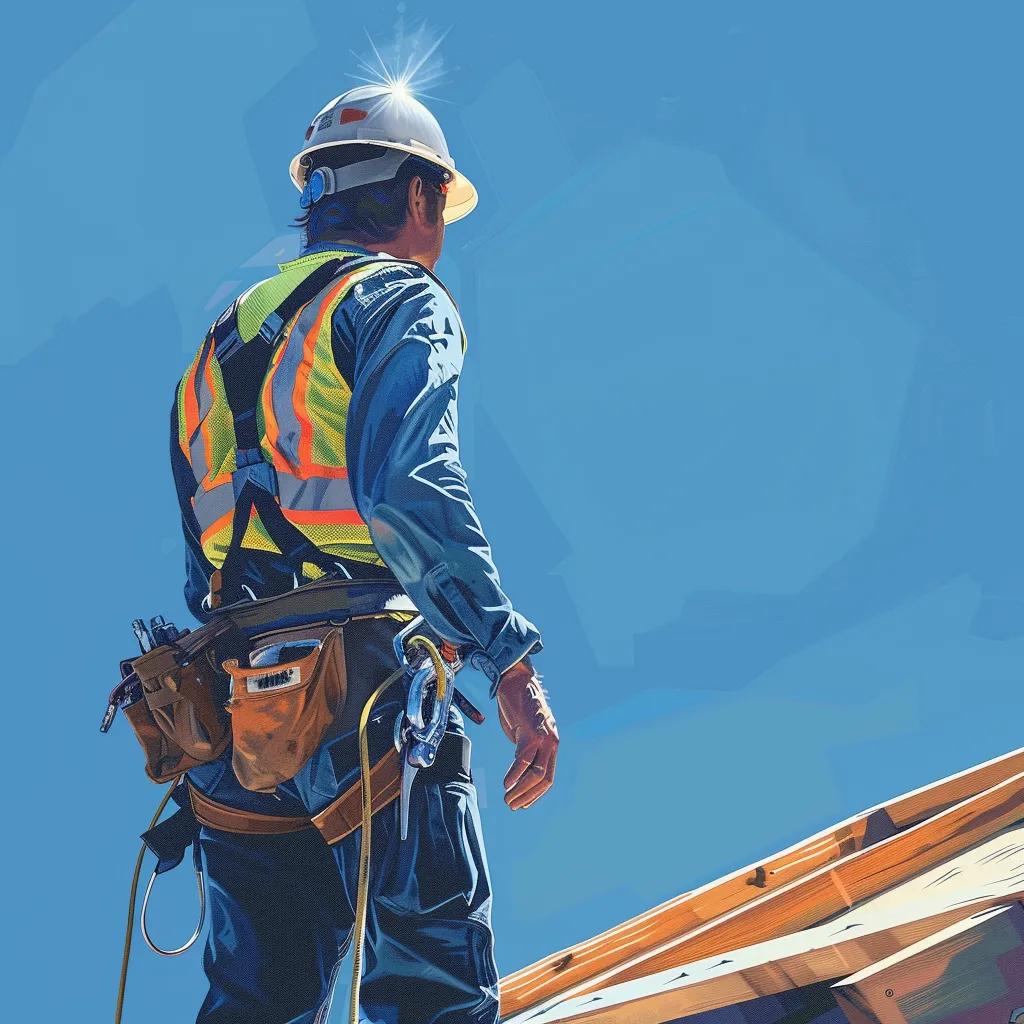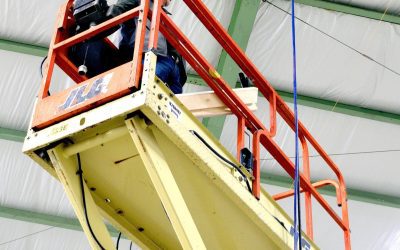Aerial Lift Fall Protection | OSHA Safety Rules for Boom & Scissor Lifts
OSHA Fall Protection for Aerial Lift Operators: Stay Safe at Every Height
Working on aerial lifts puts you well above ground, and directly into OSHA’s fall protection zone. Whether you’re using a boom lift, scissor lift, or bucket truck, the risk of falling is real, and the rules are strict.
This guide explains what OSHA requires for aerial lift operators. You’ll learn how to prevent falls, choose the right gear, create a rescue plan, and train your team. Everything here aligns with OSHA standards like 1926.501(b)(1) and 1926.453, so you can stay safe and compliant on every lift.
Do Aerial Lift Operators Need Fall Protection?
Yes, every time you’re in an aerial lift. OSHA requires fall protection for:
- Boom lifts (also called bucket trucks or cherry pickers)
- Scissor lifts used in construction or facility maintenance
- Any lift that raises a worker off the ground
Under 29 CFR 1926.453(b)(2)(v), you must wear a Personal Fall Arrest System (PFAS) attached to a designated anchor point inside the lift.
For scissor lifts, guardrails may be enough, but only if they’re in place and in good condition.
Where Do Most Aerial Lift Falls Happen?
Here are common fall hazards when operating lifts:
- Not tying off in a boom lift
- Climbing on or leaning over guardrails
- Uneven or unstable surfaces that cause the lift to tip
- Sudden movements that throw the operator off balance
- Faulty harnesses or missing anchor points
These risks apply in construction, maintenance, signage, painting, tree trimming, and warehouse work.
What Kind of Fall Protection Gear Do Lift Operators Need?
For boom lifts, OSHA requires a full-body harness and a lanyard or self-retracting lifeline (SRL) connected to a secure anchor point inside the platform.
For scissor lifts:
- Use the guardrail system already built into the lift
- Never stand on or lean over the rails
- Tie-off only if the manufacturer or jobsite requires it
All gear must meet ANSI Z359 standards and be inspected regularly.
What Fall Protection Rules Apply to Aerial Lifts?
Aerial lift operators must follow OSHA’s fall protection rules in:
- 29 CFR 1926.453 – Aerial Lift Safety
- 1926.501(b)(1) – Protection from falls at 6 feet or higher
- 1910.67 – For lifts used in general industry (like maintenance)
If you’re working 6 feet above ground or more, you need protection.
How Do You Lower Fall Risks in Aerial Lifts?
Use OSHA’s Hierarchy of Controls to reduce risk:
- Eliminate the hazard – Do work from the ground if possible
- Use passive protection – Use lifts with guardrails or enclosed baskets
- Use fall restraint or arrest systems – Harness + lanyard setups that stop falls
- Apply administrative controls – Training, signage, and safe work rules
A strong rescue plan should also be part of your safety process.
How to Build a Fall Protection Plan for Lift Operators
If your workers use aerial lifts, your plan should include:
-
- Hazard assessment – Where and when lifts are used
- System selection – What gear is required for each lift type
- Inspection procedures – Who checks harnesses, lanyards, and lifts
- Training requirements – What operators need to know before using the lift
- Rescue plan – How to help a suspended worker safely
Assign a competent person to manage the plan and make updates when needed.
What Happens If You Don’t Follow the Rules?
Skipping fall protection isn’t just risky—it’s expensive:
-
- $15,000+ per serious violation
- $150,000+ for repeated or willful violations
- OSHA inspections are common on jobsites with aerial lifts
Even one missed tie-off could lead to a fall, a fine, or worse. Compliance protects your workers and your business.
Fall Protection Training for Aerial Lift Operators
Operators must be trained under:
-
- 29 CFR 1926.503 (Construction)
- 29 CFR 1910.30 (General Industry)
Training must cover:
-
- When fall protection is needed
- How to wear a harness properly
- Where and how to connect to anchor points
- Rescue procedures and emergency communication
Refresher training is needed if there’s a near-miss, a change in equipment, or any doubt about compliance.
Common Aerial Lift Fall Protection Mistakes
-
- Not tying off in a boom lift
- Using the wrong anchor point (e.g., guardrails)
- Missing or damaged harnesses
- No documented training
- No rescue plan on site
Avoiding these errors keeps your team safe—and keeps OSHA off your back.
Frequently Asked Questions: Aerial Lift Fall Protection
Q: Do I always have to tie off in a boom lift?
Yes. OSHA requires it every time.
Q: Do I need to tie off in a scissor lift?
Only if the guardrails are missing or compromised—or if the lift manufacturer says so.
Q: What’s the best anchor point in a boom lift?
Use only the built-in anchor points inside the platform. Never tie off to the guardrails.
Q: How often should fall protection gear be inspected?
Before every use by the worker, and at least every 6 months by a qualified person.
Q: What’s the rescue plan for someone who falls and is suspended?
It should include trained responders, equipment, communication steps, and regular practice drills.

